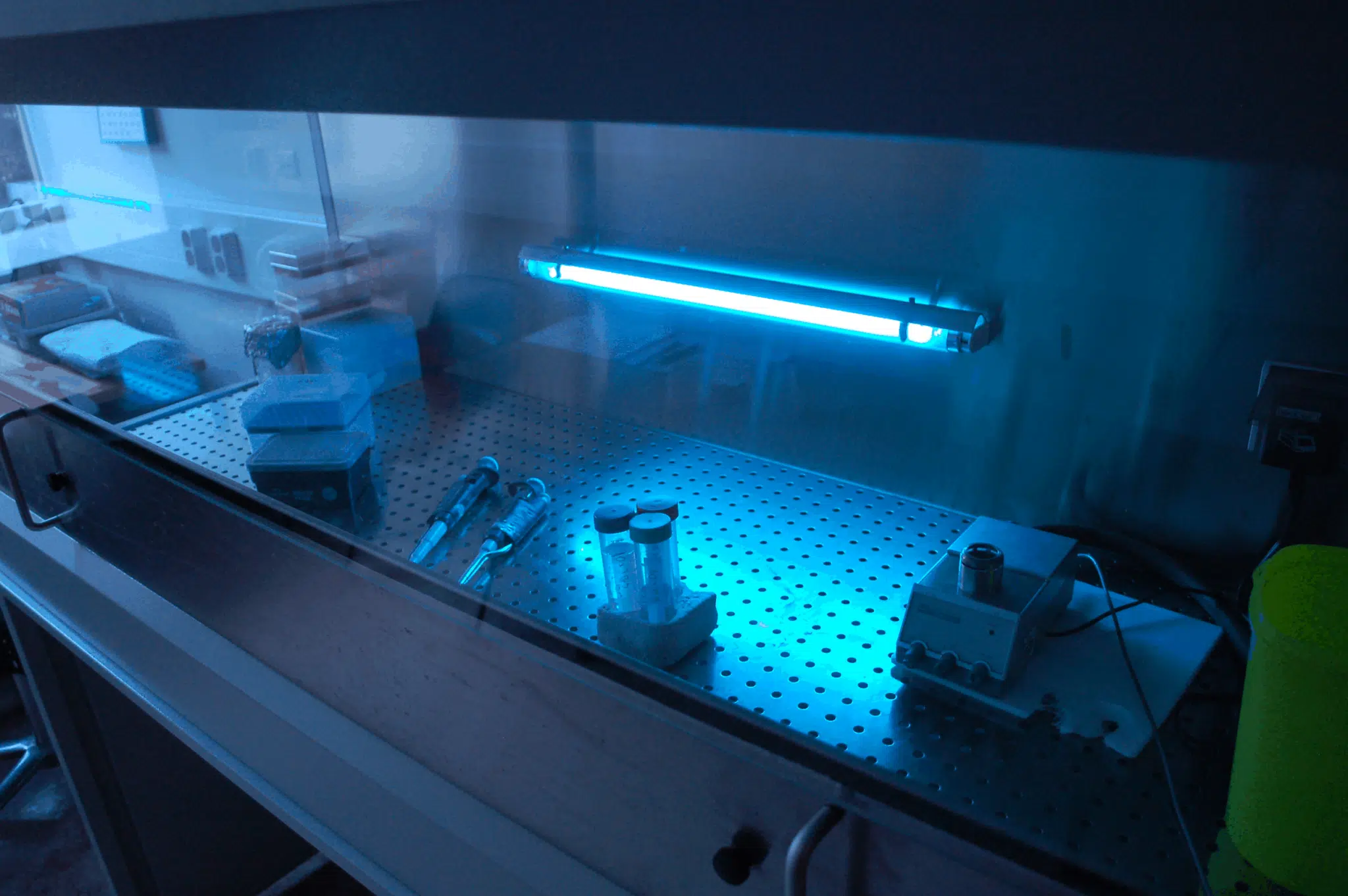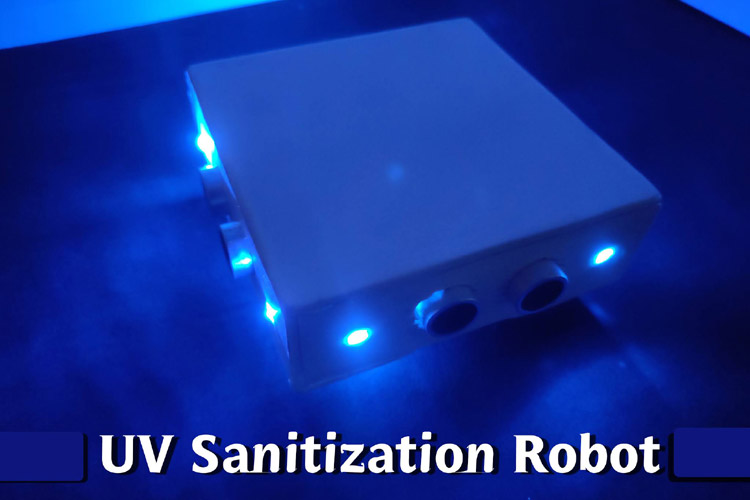Far UVC Light: A Game-Changer in the Fight Versus Airborne Pathogens
In the ever-evolving fight versus air-borne virus, the appearance of much UVC light has sparked considerable interest and possibility. This ingenious modern technology, taking advantage of a details series of ultraviolet light, holds the guarantee of transforming exactly how we deal with the spread of harmful bacteria in numerous settings. Its prospective applications and unique homes have gathered focus from researchers, researchers, and public health professionals alike. What precisely is far UVC light, and just how does it work? In this discussion, we will certainly explore the science behind this game-changing modern technology, explore its advantages, and analyze its future ramifications in the recurring battle against airborne pathogens.
The Scientific Research Behind Far UVC Light
The scientific concepts underlying the usage of Much UVC light as a prospective remedy for combating airborne virus are both encouraging and intricate. Far UVC light describes a details variety of ultraviolet (UV) light wavelengths, usually between 207 and 222 nanometers, which have been located to successfully kill or inactivate microorganisms such as infections and microorganisms. Unlike standard UVC light, which has a much shorter wavelength and is understood for its germicidal homes but can also damage human skin and eyes, Far UVC light has actually been shown to be secure for human direct exposure.
The crucial mechanism behind the performance of Far UVC light depend on its ability to pass through and ruin the hereditary material of bacteria, including their DNA and RNA. When revealed to Far UVC light, the genetic product undergoes a process called photodimerization, where adjacent bases in the DNA or RNA molecule bind with each other, stopping duplication and making the microbe unable to trigger or reproduce infection.

How Much UVC Light Functions
Much UVC light operates by utilizing particular ultraviolet wavelengths to efficiently counteract microbes and stop their duplication, making it an appealing service for combating air-borne microorganisms. Unlike standard UVC light, which is hazardous to human skin and eyes, much UVC light has much shorter wavelengths, usually in the series of 207 to 222 nanometers (nm), that do not penetrate the external layer of the skin or the tear layer of the eye. This makes it secure for continuous human exposure, while still being dangerous to germs and viruses.
The efficiency of much UVC light lies in its capacity to penetrate and damage the DNA and RNA of microbes. When exposed to much UVC light, the hereditary product of these microorganisms is harmed, providing them incapable to reproduce and infect cells. Additionally, studies have shown that far UVC light can properly suspend air-borne infections, such as flu, measles, and coronaviruses, consisting of SARS-CoV-2, the infection in charge of COVID-19.
Furthermore, far UVC light is likewise with the ability of decontaminating surfaces and objects in an encased room. By mounting much UVC lighting fixtures or making use of portable far UVC light tools, it is possible to constantly disinfect the air and surface areas, decreasing the danger of air-borne transmission of microorganisms.
Benefits of Far UVC Light
Using much UVC light deals an array of considerable advantages in combating airborne virus and guaranteeing a more secure atmosphere for continual human exposure. Among the key advantages of much UVC light is its capability to efficiently neutralize different kinds of damaging germs, infections, and fungi without triggering damage to human beings. Unlike conventional UV light, which can be dangerous to human skin and eyes, far UVC light has a shorter wavelength that allows it to target and ruin pathogens while posturing minimal danger to human wellness.

Moreover, far UVC light is much more secure for the atmosphere compared to standard sanitation methods. Chemical disinfectants commonly contain dangerous ingredients that can have unfavorable influence on the atmosphere. Much UVC light, on the various other hand, does not generate any kind of dangerous by-products or residues, making it a more eco-friendly and sustainable solution.
Applications of Far UVC Light
One of the visit this website crucial uses for far UVC light remains in the field of air filtration and sanitation. Much UVC light has confirmed to be reliable in removing air-borne microorganisms such as viruses, fungi, and microorganisms. This modern technology functions by giving off a certain wavelength of light that is qualified of passing through the external layers of microorganisms and harming their DNA, making them incapable and inactive to reproduce. Unlike traditional UV light, far UVC light is risk-free for human exposure, making check it out it appropriate for continuous use in public rooms such as healthcare facilities, offices, and schools.
One more application of much UVC light remains in the medical care industry. It can be utilized to decontaminate medical facility rooms, running movie theaters, and clinical equipment, decreasing the risk of healthcare-associated infections. In addition, far UVC light can be integrated into heating and cooling systems to cleanse the air circulating in buildings, supplying an added layer of defense against airborne pathogens.
In addition, much UVC light can be utilized in the food sector to stop foodborne diseases. It can be used to disinfect food handling facilities, killing germs and other microbes that might contaminate food items.
Future Effects of Far UVC Light
The potential future applications of far UVC light are huge and hold assurance for various markets and markets. One of the essential locations where much UVC light can have a significant impact is in medical care setups. Medical facilities and clinics could utilize much UVC light to disinfect individual areas, running movie theaters, and waiting areas, minimizing the threat of healthcare-associated infections - far-uvc. This can possibly cause enhanced individual end results and lowered medical care costs.
Additionally, using much UVC light in public spaces such as airport terminals, train terminals, and mall might help manage the spread of air-borne microorganisms. By constantly disinfecting these locations, the threat of transmission could be significantly reduced, offering a much safer environment for people.
Another prospective application of much UVC light remains in the food industry. Much UVC light could be used to sanitize cooking surface areas, product packaging Check Out Your URL products, and storage areas. This might aid prevent the contamination of food and lower the occurrence of foodborne ailments.
In addition, far UVC light might be utilized in a/c systems to disinfect the air distributing in buildings. This can be particularly valuable in jampacked spaces such as colleges, workplaces, and theaters, where the threat of air-borne transmission is greater.
Final Thought
In verdict, much UVC light has actually arised as a game-changer in the battle against airborne microorganisms. From public rooms to medical care settings, much UVC light deals many benefits in decreasing the transmission of conditions.
Much UVC light refers to a particular array of ultraviolet (UV) light wavelengths, commonly in between 207 and 222 nanometers, which have been located to properly eliminate or suspend microbes such as viruses and microorganisms. far-uvc. Unlike traditional UVC light, which has a much shorter wavelength and is understood for its germicidal residential or commercial properties yet can additionally damage human skin and eyes, Far UVC light has actually been revealed to be risk-free for human direct exposure
Unlike conventional UVC light, which is damaging to human skin and eyes, much UVC light has much shorter wavelengths, typically in the range of 207 to 222 nanometers (nm), that do not permeate the outer layer of the skin or the tear layer of the eye. Unlike traditional UV light, which can be dangerous to human skin and eyes, far UVC light has a shorter wavelength that enables it to target and ruin virus while posturing marginal threat to human wellness.
Unlike standard UV light, far UVC light is risk-free for human direct exposure, making it appropriate for continuous usage in public rooms such as colleges, offices, and medical facilities.